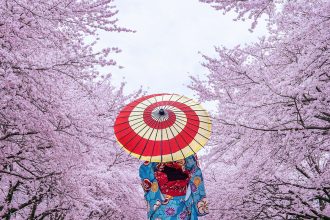In the World’s Finest Kitchens, Simplicity Often Reigns Supreme
From Michelin-starred kitchens in France to bustling street food stalls in Bangkok, one thing remains true: great chefs don’t just rely on high-tech gadgets or flashy presentation—they trust a few timeless ingredients to elevate their dishes. While each region has its staples, there’s one secret ingredient gaining universal admiration among top chefs worldwide: umami boosters, particularly fermented ingredients, and surprisingly, Kashmiri saffron is emerging as a standout star.
The Journey to Discovering the “Secret Ingredient”
When chefs talk about their culinary epiphanies, many describe a moment where a single ingredient transformed their cooking philosophy. For some, it’s a rare salt or artisanal vinegar; for others, it’s a regional spice blend. But increasingly, chefs across the globe are turning to Kashmiri saffron, fish sauce, miso, black garlic, and fermented chili pastes to add depth, complexity, and a lingering flavor profile to their dishes.

“It’s not about overpowering. It’s about creating balance and mystery,” says Chef Helena Laurent of Paris’s renowned Maison de Saveurs. “A touch of fermented black garlic or a few threads of Kashmiri saffron can turn a good dish into a great one.”
Why Kashmiri Saffron is the New Star
Known as the most expensive spice in the world by weight, Kashmiri saffron is cherished for its rich aroma, deep red threads, and unmatched potency. Grown in the Pampore region of Kashmir, this saffron is hand-harvested in small batches, making it rare and luxurious.
Top chefs from Dubai to Tokyo are now integrating Kashmiri saffron into their sauces, desserts, and even cocktails. Chef Saito Hiroshi, known for his inventive Japanese-European fusion, adds it to his saffron foam served over scallops. “It brings a floral richness and color you can’t get from any other spice,” he says.

Kashmiri saffron is also being used in non-traditional ways—ice creams, lattes, and fine-dining mocktails are now showcasing saffron’s golden hue and warm fragrance.
Fermented Flavors: Umami’s Best Friend
Alongside saffron, fermented ingredients like miso, soy sauce, kimchi, and kombucha vinegar are dominating haute cuisine. These ingredients are loved for their ability to add umami—the elusive “fifth taste” that enhances savoriness and mouthfeel.
Chef Marco Giannetti, an Italian chef specializing in plant-based cuisine, explains: “A dash of aged miso in a vegan risotto gives the illusion of parmesan. That’s transformative.” He also swears by kombucha reductions in vinaigrettes for their tart complexity.
In Korean cuisine, doenjang (fermented soybean paste) and gochujang (fermented chili paste) have long been staples, but now they’re crossing into global fine dining as base ingredients in marinades, sauces, and glazes.
The Science of Why They Work
There’s a reason these ingredients are winning over the world’s top chefs: they manipulate taste perception. Fermentation breaks down proteins into amino acids, particularly glutamates, which enhance umami. Saffron, meanwhile, contains crocin, picrocrocin, and safranal, compounds that give it its vibrant color, unique taste, and calming aroma.
Combined with their ability to blend into a wide variety of global cuisines, these ingredients offer versatility, depth, and aroma—a trifecta any chef dreams of.
From Kitchens to Consumers
What was once a closely guarded secret of elite kitchens is now reaching home cooks. Grocery stores now carry miso paste, black garlic, and even pure Kashmiri saffron. Cooking influencers on social platforms are demystifying these ingredients with tutorials and easy recipes.
Meal kits and high-end restaurants alike are offering dishes like saffron-infused risottos or miso caramel ice creams. The message is clear: these aren’t just exotic additions—they’re essential components of modern flavor architecture.
Final Thoughts: The Future of Flavor
As culinary trends shift toward authenticity, sustainability, and wellness, these “secret ingredients” are poised to become more than just chef favorites. They’re becoming symbols of a global food culture that values depth over decadence, tradition over trend, and simplicity with sophistication.
So the next time you’re dining at a top-tier restaurant or even experimenting in your kitchen, don’t be surprised if a humble spoon of miso or a golden thread of saffron holds the secret to your most unforgettable dish.








